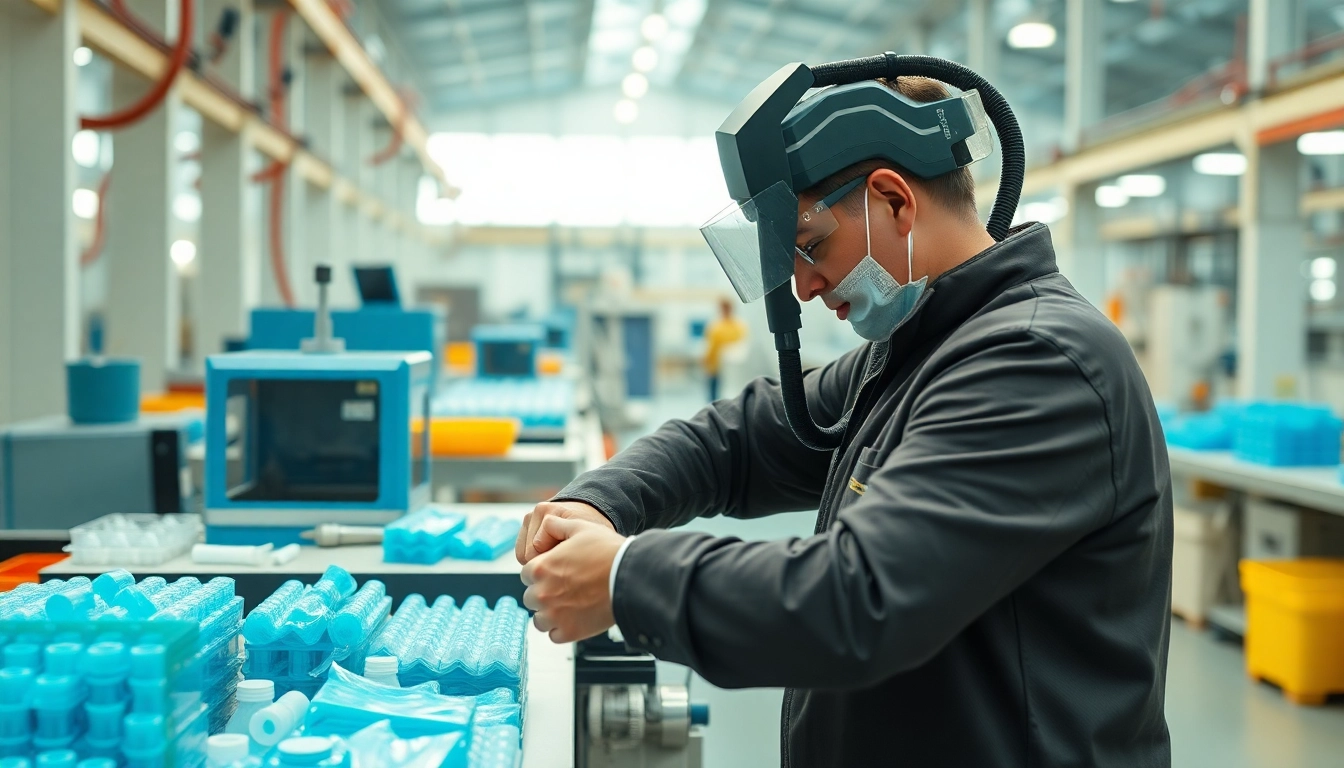Understanding Infusion Resins
What are Infusion Resins?
Infusion resins are specialized epoxy or polyester materials commonly used in the composite manufacturing process. They are characterized by their low viscosity, allowing them to flow easily into intricate mold designs and saturate fibrous materials. This property is vital in ensuring that the final composite product maintains strength and clarity while achieving uniform distribution throughout the mold. The infusion process typically involves creating a vacuum to remove air from the mold and then introducing the resin, which fills the voids in the fiber material. For professionals in the composite industry, understanding the precise characteristics and applications of infusion resins is critical for producing high-quality components.
Applications of Infusion Resins
Infusion resins are widely utilized in various industries, including aerospace, automotive, marine, and construction. Their applications can be categorized based on the specific requirements of the components being produced:
- Aerospace: In the aerospace sector, infusion resins are used to create lightweight yet strong structural components, such as wing boxes and fuselages, where weight reduction is crucial for fuel efficiency.
- Automotive: Designers of high-performance vehicles often utilize infusion resins in body panels and reinforcement structures to improve durability without significantly increasing weight.
- Marine: Infusion resins allow the production of boats and yachts that require exceptional strength and resistance to harsh environmental conditions, often outperforming traditional materials.
- Construction: Composite materials using infusion resins are also gaining popularity in building applications, offering enhanced structural properties and design flexibility.
Benefits of Using Infusion Resins
The selection of infusion resins in composite manufacturing comes with a myriad of benefits:
- Enhanced Performance: Infusion resins contribute to superior mechanical properties, such as tensile strength and stiffness, due to effective saturation of fiber reinforcements.
- Reduced Volatile Emissions: The closed vacuum infusion process minimizes the release of volatile organic compounds (VOCs), aligning with environmental regulations and promoting safer working conditions.
- Control Over the Process: The infusion technique enables manufacturers to exert greater control over the resin cure time and flow rate, allowing for tailored production schedules.
- Cost-Effectiveness: Despite initial investments in equipment, the long-term savings associated with reduced waste and increased efficiency can significantly lower overall production costs.
Types of Infusion Resins Available
Low-Viscosity Infusion Resins
Low-viscosity infusion resins are designed specifically for use in infusion processes. Their fluid nature allows them to penetrate fiber configurations while minimizing the risk of air entrapment. These resins are ideal for creating detailed and complex shapes in composite components:
- Applications: Especially popular in the manufacture of detailed parts in automotive and marine industries, where complex shapes need to be filled effortlessly.
- Features: Quick wet-out times, improved surface finish, and effective adhesion with a variety of fiber reinforcements.
High-Temperature Infusion Resins
High-temperature infusion resins withstand extreme operational environments, maintaining structural integrity and performance at elevated temperatures:
- Applications: Commonly used in industries like aerospace and automotive for components that are exposed to high thermal loads.
- Features: Enhanced thermal stability and resistance to degradation in high-temperature scenarios, important in ensuring safety and performance.
Bio-Based Infusion Resins
With increasing environmental concerns, bio-based infusion resins are emerging as a sustainable alternative to traditional petroleum-based options. They are derived from renewable sources and designed to perform just as effectively:
- Applications: Suitable for environmentally conscious projects in various industries, appealing to architects and manufacturers looking to reduce their carbon footprints.
- Features: Often exhibit comparable or superior mechanical properties and durability while promoting sustainability.
Infusion Resin Manufacturing Process
Preparation Steps
The manufacturing process for creating components using infusion resins begins long before the resin itself is introduced. Proper preparation ensures optimal results. Key steps include:
- Choosing the Right Fiber: The selection of fiber reinforcements, such as fiberglass, carbon fiber, or aramid, which influences the composite’s overall strength and weight.
- Mold Design: Creating a mold that accurately represents the desired final product, considering factors such as ventilation, resin inlet, and vacuum points.
- Surface Treatment: Preparing the mold surface with release agents and cleanliness checks to optimize adhesion and prevent defects.
Mixing and Application Techniques
The next phase involves mixing the components of the resin and preparing for application. This process can be nuanced:
- Precise Mixing Ratios: Following manufacturer specifications for resin and hardener ratios is crucial to achieve desired curing and performance characteristics.
- Application Methods: Techniques may vary from traditional pouring to more advanced methods like using pumps or automated dispensing equipment to ensure even distribution.
- Vacuum Setup: Implementing a vacuum system to eliminate voids and ensure that the resin fully saturates the fiber components.
Curing Processes for Infusion Resins
Once the resin has been applied and the vacuum is established, the curing process begins. Curing, often involving heat application, solidifies the resin and sets its properties.
- Heat Curing: For high-performance applications, controlled curings, such as heated molds or ovens, enhance the final product’s mechanical properties.
- Room Temperature Curing: Suitable for less demanding applications, where environmental factors may dictate the processing time.
- Post-Curing Techniques: Additional curing steps can further improve composite properties post-manufacture.
Best Practices for Infusion Resins Use
Choosing the Right Infusion Resin
Selecting the appropriate infusion resin is essential and should be based on several criteria:
- Application Suitability: Whether the intended use of the composite requires temperature resistance, strength, or biocompatibility, selecting a resin that matches these needs is key.
- Environmental Considerations: Choosing bio-based options when sustainability is a priority can also help meet organizational objectives.
- Cost and Availability: Balancing performance requirements with economic considerations is critical for any manufacturing process.
Safety Considerations
Working with chemical resins comes with inherent risks, emphasizing the need for comprehensive safety measures:
- PPE: Always wear personal protective equipment, including gloves, goggles, and respirators, to minimize exposure to harmful materials.
- Ventilation: Proper ventilation in workspaces is essential to mitigate the inhalation risk of harmful fumes during mixing and curing processes.
- Emergency Procedures: Establish clear protocols for dealing with spillages or accidents involving resins to ensure the safety of all personnel.
Common Mistakes to Avoid
Avoiding common pitfalls can significantly enhance the success of projects using infusion resins:
- Poor Mold Preparation: Inadequate mold preparation can lead to defects in the final product, emphasizing the need for thorough cleaning and application of release agents.
- Incorrect Mixing Ratios: Neglecting to follow mixing guidelines can drastically alter performance characteristics, leading to compromised structural integrity.
- Insufficient Curing Time: Rushing the curing process can lead to incomplete curing, which may compromise the mechanical properties of the composite.
Performance Evaluation of Infusion Resins
Testing Methods
Evaluating the performance of composites manufactured with infusion resins is essential for ensuring reliability and safety. Various testing methods can be employed:
- Tensile Testing: Measures the strength and elasticity of components under stretching forces.
- Impact Testing: Assesses the durability and toughness of composite materials under sudden forces.
- Thermal Stability Testing: Determines how well a composite performs under extreme temperature changes.
Interpreting Performance Metrics
Understanding the metrics obtained from performance testing helps manufacturers to optimize their products:
- Comparative Analysis: Evaluating test results against industry standards ensures that the materials meet or exceed established thresholds.
- Characteristics of Failure: Observing methods of failure can guide improvements in resin formulation or application techniques to enhance durability.
- Documenting Results: Maintaining detailed records of testing outcomes aids future development and process refinement.
Long-term Benefits of Infusion Resins
Investing in high-quality infusion resins yields extensive long-term benefits. These include:
- Improved Product Lifecycle: Superior strength and durability enhance the longevity of composite products, resulting in fewer replacements and repairs over time.
- Positive Environmental Impact: The closed infusion process reduces waste while bio-based options further decrease environmental footprints.
- Market Competitiveness: Products developed using advanced infusion resins can achieve better market positioning due to their enhanced properties and potential applications.



